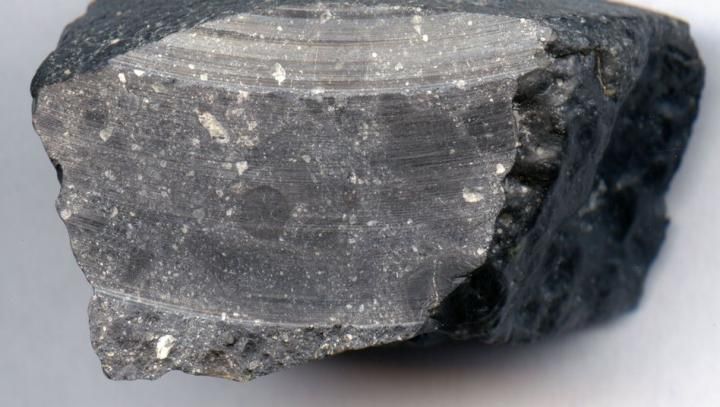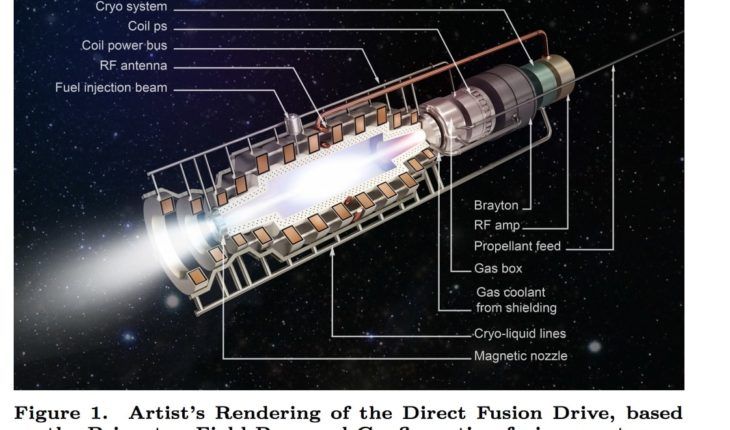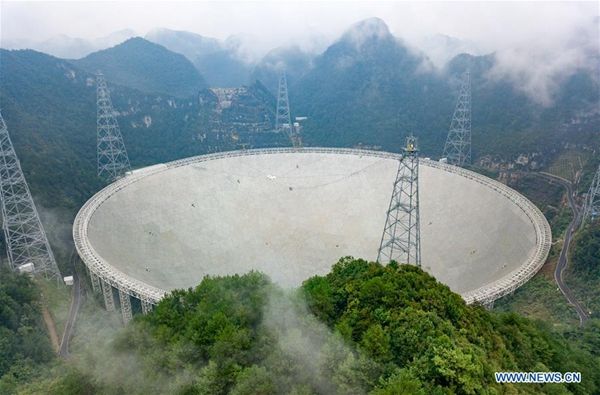One of the biggest threats to the International Space Station (ISS) comes from micrometeoroid impacts. A small hole in the wrong place can throw the resident astronauts into a life threatening situation. Currently, there is no active program to monitor these types of impacts, though scientists think they must be common given the ubiquity of small objects in the ISS’s orbit. An interdisciplinary team from MIT hopes to provide some data to support that theory by using an extremely unusual impact sensor made almost entirely out of fabric.
Continue reading “There’s Fabric on the Space Station That Scientists Are Using to “Listen” for Space Dust Impacts”Geysers on Europa might come from pockets of water under the ice
Observations have already confirmed the existence of a sub-surface ocean on Europa, and there has been rampant speculation about whether they could contain life. While there have been tentative plans to send a submersible spacecraft to this ocean, we are still a long way from uncovering what lies in those depths.
Which is one big reason why the geysers that occasionally shoot out of Europa’s ice sheet have garnered such interest. Scientists hoped that some of the ejected water could come from that ocean. It could then be sampled with a simple fly-by mission, such as Europa Clipper, rather than a submersible craft. However, a new paper published in Geophysical Research Letters suggests a much more mundane source of the geysers – local liquid water buried in the moon’s thick ice shelf.
Continue reading “Geysers on Europa might come from pockets of water under the ice”The First Civilization We Contact Will Have Been Around Much Longer Than Humanity
Recently at UT, author Matt Williams has been writing a series called “Beyond Fermi’s Paradox”, which takes a look at possible resolutions to one of the most famous questions in science: “Where is everybody?” As Matt discusses, there are multiple hypothetical solutions, but there may eventually come a day when we can definitively answer it.
Consideration of that day opens up a whole host of new questions, not the least of which is what will an intelligent civilization we find be like? Carl Sagan popularized the notion that it is very unlikely that any extraterrestrial civilization would be equivalent to ours in terms of technological progress. What he did not address was the relative age of the civilization and what that might mean in terms of their interest in communicating with us. Now a team of astronomers have come up with an answer to that question using one of the most underappreciated mathematical tools: statistics. Their model provides a simple answer: any intelligent civilization is likely older than us, and potentially much older.
Continue reading “The First Civilization We Contact Will Have Been Around Much Longer Than Humanity”Meteorite Tells Us About Water on Mars 4.4 Billion Years Ago

Meteorites often offer terrific glimpses into worlds we are unable to otherwise access. Sometimes those worlds are simply fragments of asteroids that didn’t burn up when they entered the atmosphere. But sometimes, they come from the Moon or Mars. Part of what makes these types of meteorites interesting is that they don’t necessarily come from what we now think of as two of our nearest neighbors. Fragments of meteorites that end up on Earth act as a kind of time capsule, allowing us to understand the geological environment of the world when the meteorite was formed.
A meteorite found in the Sahara desert a few years ago is exactly that type of time capsule. Named NWA 7533 (named after “North West Africa”, not the 80s rap group), this meteorite came from Mars about 4.4 billion years ago. A team led by Profs Zhengbin Deng at the University of Copenhagen and Takashi Mikouchi at the University of Tokyo have found evidence that the impact the created NWA 7533 most likely took place in the presence of water.
Continue reading “Meteorite Tells Us About Water on Mars 4.4 Billion Years Ago”Astronauts and explorers on Mars could eat lab-grown steaks
Growing meat without the need to grow a whole animal has been the dream of agriculturalists and foodies everywhere for decades. More and more companies are jumping on the bandwagon to try to truly recreate the experience of eating meat without the downsides so often associated with its creation. One of those companies is Aleph Farms, based in Israel, which just announced their newest program – Aleph Zero, an effort to grow meat in industrial quantities in space.
Continue reading “Astronauts and explorers on Mars could eat lab-grown steaks”How Will Starlink’s Packet Routing Work?
SpaceX’s Starlink satellite cluster has been receiving more and more headline space recently as it continues adding satellites at a breathtaking pace. Much of this news coverage has focused on how it’s impacting amateur skygazers and how it could benefit people in far-flung regions. But technical details do matter, and over on Casey Handmer’s blog there was a recent discussion of one of the most important aspects of how Starlink actually operates – what will it do with its data?
Continue reading “How Will Starlink’s Packet Routing Work?”Room-temperature Superconductivity Achieved for the First Time, but There’s a Catch
One of the most interesting things about space exploration is how many technologies have an impact on our ability to reach farther. New technologies that might not immediately be used in space can still eventually have a profound long-term impact. On the other hand, everyone knows some technologies will be immediately game changing. Superconductors, or materials that do not have any electrical resistance, are one of the technologies that have the potential to be game changing. However, hurdles to their practical use have limited their applicability to a relatively small sub-set of applications, like magnetic resonance imaging devices and particle accelerators. But another major hurdle to the broad use of superconductors has now been cleared – a lab at the University of Rochester (UR) has just developed one that works at almost room temperature. The big caveat is it has to be under pressure similar to that in the Earth’s core.
Continue reading “Room-temperature Superconductivity Achieved for the First Time, but There’s a Catch”Impatient? A Spacecraft Could Get to Titan in Only 2 Years Using a Direct Fusion Drive
Fusion power is the technology that is thirty years away, and always will be – according to skeptics at least. Despite its difficult transition into a reliable power source, the nuclear reactions that power the sun have a wide variety of uses in other fields. The most obvious is in weapons, where hydrogen bombs are to this day the most powerful weapons we have ever produced. But there’s another use case that is much less destructive and could prove much more interesting – space drives.
Continue reading “Impatient? A Spacecraft Could Get to Titan in Only 2 Years Using a Direct Fusion Drive”Operating a Rover in Real-time From a Distance
There are instances other than pandemics when it is necessary to work remotely. Spacecraft operators are forced to do most of their work remotely while their charges travel throughout the solar system. Sometimes those travels take place a little closer to home. Engineers at DLR, Germany’s space agency, recently got to take the concept of remote working to a whole new level when they operated a rover in a whole different country almost 700 kilometers away while working remotely from their primary office.
Continue reading “Operating a Rover in Real-time From a Distance”Astronomers Will Be Able to Use the World’s Biggest Radio Telescope to Search for Signals from Extraterrestrial Civilizations
Back in April, we reported on how a collaboration between the Chinese Academy of Sciences, the Breakthrough Listen Initiative, and the SETI Institute planned to use the new Five-hundred-meter Aperture radio Telescope (FAST) to search for signs of extraterrestrial life. We now caught up with another of the project scientists to flesh out some more details of their observational plans and what observations they hope to make in the future.
Continue reading “Astronomers Will Be Able to Use the World’s Biggest Radio Telescope to Search for Signals from Extraterrestrial Civilizations”








